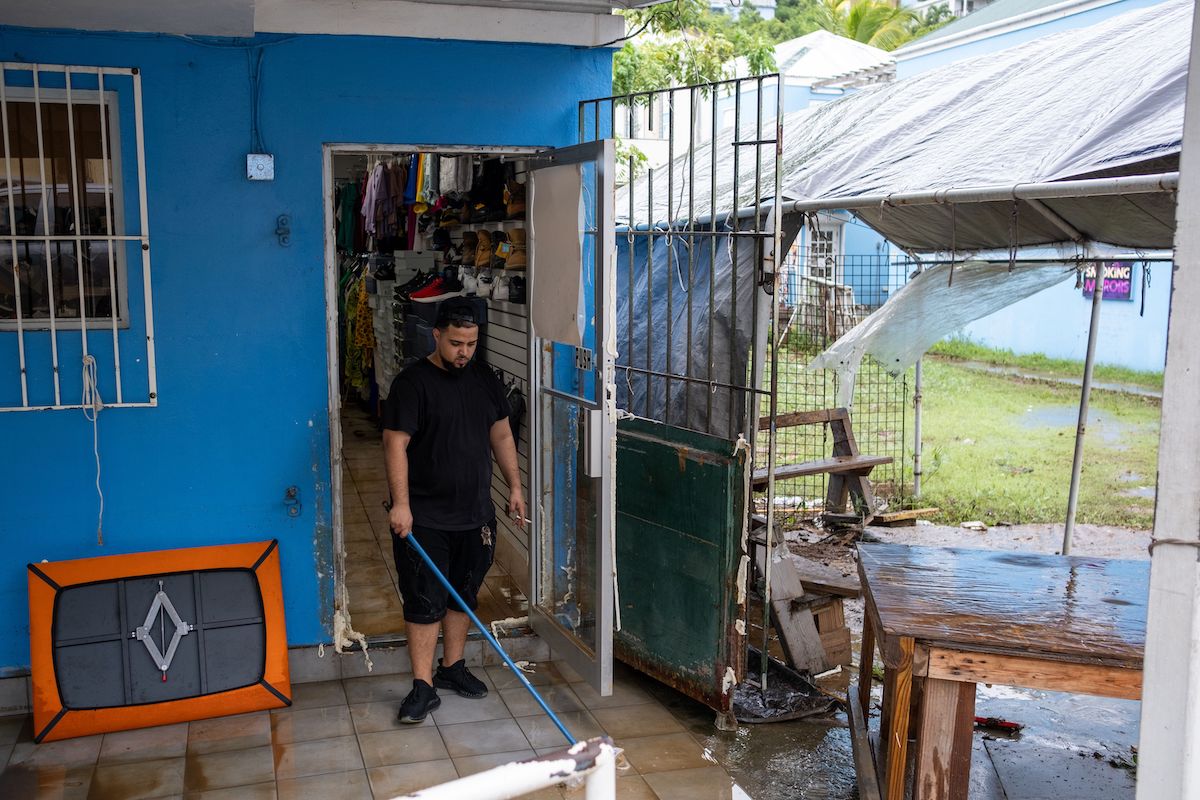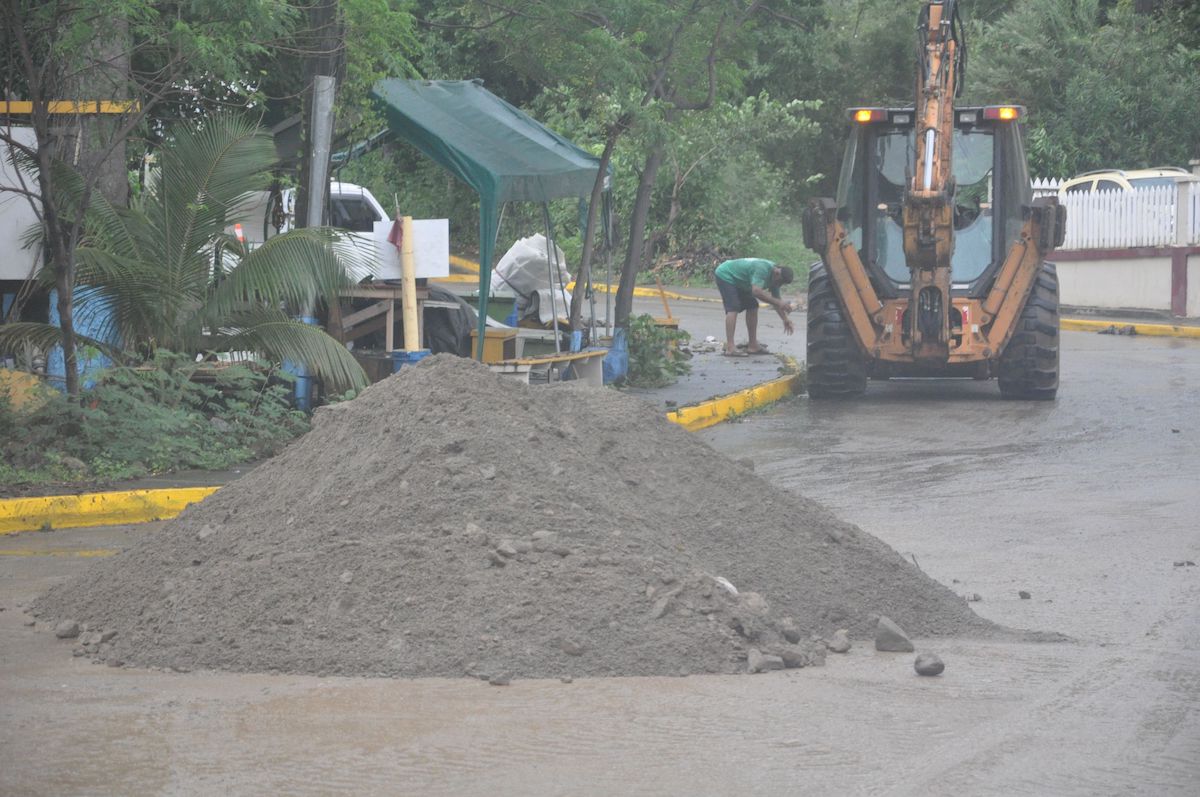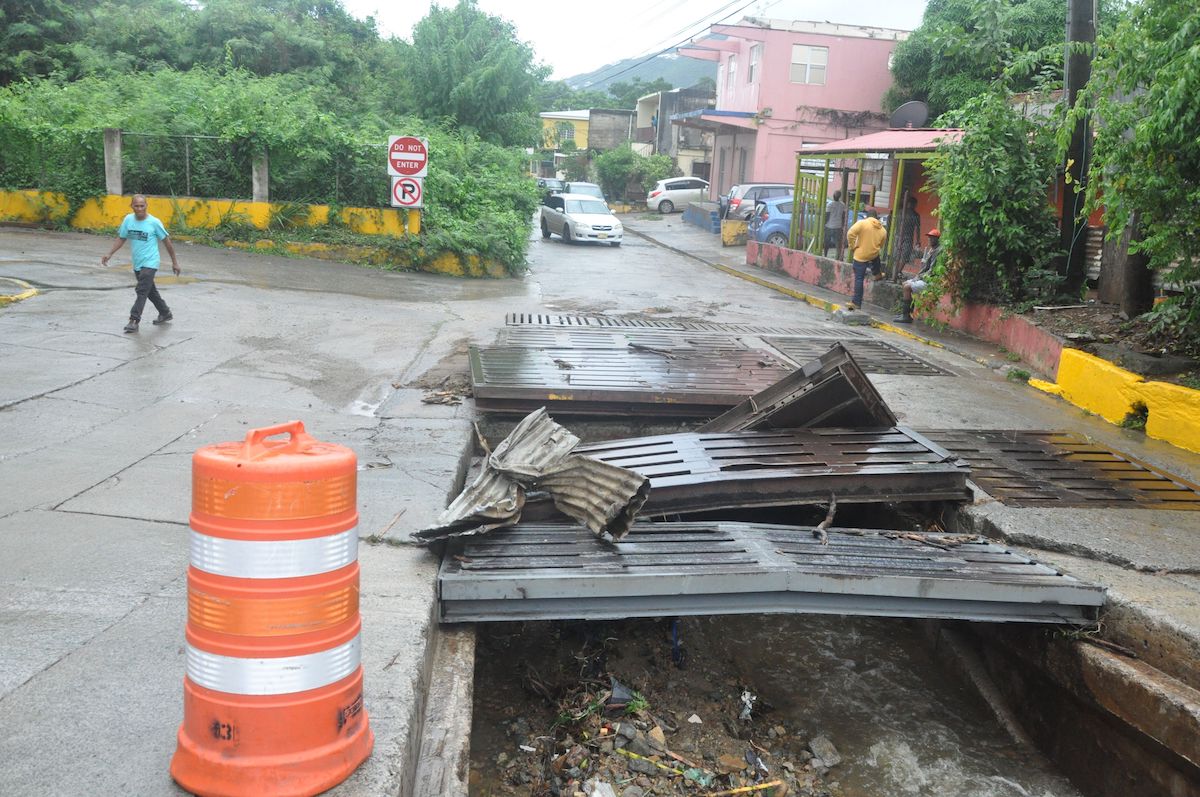Thanks to insurance purchased shortly after Hurricane Irma, the government has received more than half a million dollars to address damage sustained during the passage of Tropical Storm Philippe on Oct. 4.
The $552,297 — which came from the Caribbean Catastrophe Risk Insurance Facility’s excess rainfall policy — is the territory’s first such pay-out since joining CCRIF in June 2018, according to government.
“This pay-out will enable us to address some of the most urgent needs of our people and restore some normalcy to our islands,” Premier Dr. Natalio “Sowande” Wheatley said in a Monday press release.
Antigua and Barbuda — which also got hit with heavy rains and flooding during Philippe — received $2,880,424 from CCRIF.

The policies
After Irma, the VI government purchased coverage for tropical cyclones, excess rainfall, and earthquakes from CCRIF. All of it began on June 1, 2018.
Until then, the territory did not participate in the multi-country risk pool — a decision that proved consequential in the aftermath of hurricanes Irma and Maria in September 2017, when other storm-battered jurisdictions received quick CCRIF payments while the VI received nothing.
During that month, the facility distributed more than $20 million to Dominica; more than $15 million to the Turks and Caicos Islands; nearly $6.8 million to Antigua and Barbuda; and more than $6.6 million to Anguilla.
Since the Cayman Islands-based CCRIF was founded with a Japanese grant in 2007, it has shelled out a total of $265 million across 62 pay-outs to 17 of its 26 members, according to a Friday CCRIF press release announcing the Philippe funds.
“Throughout the years, CCRIF member governments have used pay-outs to address immediate needs post-disaster — from providing food, water and medicines to the most vulnerable, to clearing roads and fixing bridges, etcetera,” the facility stated. “Pay-outs have also been used for repairing and improving critical infrastructure such as schools and water treatment plants, and supporting sectors such as tourism and agriculture.”

14 days
All CCRIF payments are issued within 14 days of the catastrophic events that triggered them, the facility added.
“Investment in CCRIF’s catastrophe risk insurance each year is an important part of [governments’] comprehensive disaster risk management strategies, as CCRIF pay-outs help to close the protection gap, reduce budget volatilities associated with exogenous shocks, and allow governments to address the country’s most urgent needs,” CCRIF CEO Isaac Anthony explained in the Friday release.
He added that payments can also be used for building disaster resilience.
Philippe fallout
In the VI, Tropical Storm Philippe poured rain from around nightfall on Oct. 3 to the early hours of Oct. 4, causing flash flooding in low-lying areas.
The Department of Disaster Management reported that Anegada saw the highest levels, with 12 inches of rain, while Brewers Bay got 10.5 inches, Cane Garden Bay got 10.9 inches, Hannahs Estate got 10.2 inches, and the rest of the territory saw at least six inches of rain.
DDM recorded gusts up to 60 miles per hour, but the storm was more noted for the rainfall than wind speeds.
“It was a lot more than was initially forecast, and we can all appreciate that such a high volume of sustained rainfall over such a lengthy period of time would no doubt put significant pressure on our infrastructure and our resources, which it did,” Dr. Wheatley said during an Oct. 6 press conference.
The premier added at the time that technical officers told him the deluge meant drainage systems were “simply overwhelmed.”

Most-affected areas
On Tortola, he said, areas that were most affected included Road Town, Huntums Ghut, Pasea, Sea Cows Bay, and West End. Already-crumbling roads also took a hit in some areas as the storm strewed debris across streets and undermined coastal areas.
Windy Hill, Carrot Bay and Brewers Bay saw the worst of those effects, the premier said on Oct. 6.
Communications and Works Minister Kye Rymer said on Oct. 6 that the government was aware of some road undermining before the storm, but the flooding revealed some new areas of concern that need to be addressed.
Some schools in the territory also saw significant impacts, including Elmore Stoutt High School. Storm water flooded the first floor of the newest ESHS building, and community members pitched in with the subsequent clean-up.